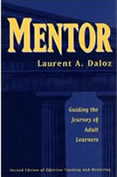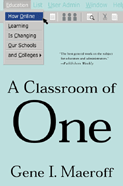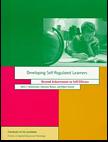Robin D. Smith
PhD Portfolio
Readings
FALL SEMESTER, 2003



EDCI 797a: Merging the Content Curriculum and Technology
Norton, P., & Wiburg, K. (2003). Teaching with technology: Designing opportunities to learn. (2nd ed.) Belmont, CA: Wadsworth.
This book manages to codify things that have been rambling around in my head and introduce me to entirely new concepts. Mnemonics like the FACTS (Foundations, Activities, Content, Tools, and Systems of Assessment) and ABCS (Authentic, Building Knowledge, Constructing, and Sharing Activities) of design have given me a framework for designing effective instruction. Processing the chapter “Designs for Literacy” forced me to broaden and deepen the scope of my thinking and design in important ways; my definition of literacy was very narrow. “Designs for Community” reminded me of the multiple and varied levels of learning that occur in any community and the importance of developing learning communities. This book will form the foundation of my 21st century teaching avatar.
Tapscott, D. (1998). Growing up digital: The rise of the net generation. New
York: McGraw-Hill.
While this book defines the concept behind the virtual high school, it also informs my instruction right now in a traditional classroom with 45-minute periods. Some of the ideas I grasped intuitively from my work with adolescent students and my own children; moreover, I had already embraced constructivism and the teacher as facilitator in a learner-centered classroom. As a librarian and English teacher, I have long been concerned with helping students develop the learning skills and attitudes that will help them navigate the resources that might be encountered in a lifetime of learning. Yet, the idea of hypermedia learning as opposed to linear learning is not something that I would have ever come discovered even though it is critical to understanding how students know and learn. This was the first book I read as part of my doctoral program. I was reassured that the picture painted of today’s students was hopeful, focusing on the strengths they bring to our world and the future. I was also reassured that the book helped me to use what I have already observed and learned to construct new knowledge that will help me ensure that my students are part of the digitally expert who will inherit the earth of the 21st century.
EDIT 797a: Web-Based Publishing
Williams, R., & Tollett, U. J. (2000). The non-designer’s web book: An easy guide to creating, designing, and posting your own web site. (2nd ed.) Berkeley: Peachpit Press.
What a great resource! I am constantly using this text. It is logically organized and imaginatively written--and fun.
SPRING SEMESTER, 2004
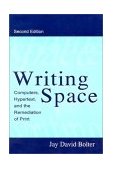

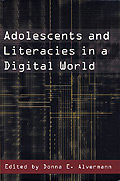




EDCI 797b: Research and Conceptions of the Content Fields
Bolter, J. D. (2001). Writing space: Computers, hypertext, and the remediation of print. (2nd ed.) Mahweh, NJ, Lawrence Erlbaum Associates.
While the primary focus of this text is to analyze the effect that electronic texts have on writing, thinking, and even being, it also does an excellent job of discussing the history of text and humanity’s long and evolving relationship with the technology of writing. The whole idea that we mediate experience through the lens of text is fascinating.
Smith, M. W., & Wilhelm, J. D. (2002). "Reading don't fix no Chevys": Literacy in the lives of young men. Portsmouth, NH: Heinemann.
I disagree with the basic premise behind this book--that males have special needs that need to be addressed by reading programs in middle and high school, but it offers a fascinating look at the reading habits and attitudes of adolescent males as well as effective strategies. The problem I have with this book is the fact that adolescent females have similar problems and should not have their needs ignored simply because they are better socialized than their male peers.
RECOMMENDED BUT UNASSIGNED READINGS:
Alverman, D. E. (Ed.) (2002). Adolescents and literacies in a digital world. Washington, DC: Peter Lang.
This is a varied and fascinating collection of essays on adolescent learning in the modern age. The pieces vary from accounts of students' use of techology in their academic and social lives to theoretical discussions of attention economy. The fact that the texts discuss adolescents beyond the continental U. S. offers a broader perspective. My mind is still burning.
Flower, L. (1994). The construction of negotiated meaning: A social cognitive theory of writing. Carbondale, IL: Southern Illinois UP.
This work offers an interesting theory construct: the author examines communication as varied forms of negotiation--external and internal. Her metaphot forces the reader to examine the processes of writing, reading, speaking,and learning through a new lens--which is just what I need.
Havisher, G. E., & Selfe, C. L. (Eds.) (1999). Passions, pedagoies and 21st century technologies. Logan, UT: Utah UP.
This collection of essays on the ways technology relates to and informs pedagogy is very informative and thought-provoking. I especially liked the fact that it presents both the problems and promise offered by technology.
EDIT 797b: Advanced Web-Based Publishing and Graphics Tools
Bereiter, C., & Scardamalia, M. (1993). Surpassing ourselves: An inquiry into the nature and implications of expertise. Chicago, Open Court.
This book has serious implications for educational design. While there are still many unanswered questions about how best to promote expertise—particularly in an educational setting, the authors clearly describe their notion of expertise as a method for approaching any work, and problem. Progressive problem solving is a process that should be fostered by specific activities and environments in any educational setting from pre-k through post graduate work.
Horn, R. (1998). Visual language: Global communication in the 21st century. Bainbridge Island, WA: MacroVU.
When I started reading this book, I began to understand and believe chaos theory in a visceral way. Many serendipitous events have led me here: starting with my conning the audio-visual instructor at Longwood to let me take his teaching module as independent study in the ‘70s (and therefore helping him with his visual literacy film) because I didn’t want to drive 50 miles one way an extra day for one class, to learning PageMaker to do the publications I got stuck working on at school, to winning a copy of Inspiration software in the early ‘90s, to always being fascinated with linguistics but not believing that it had any practical use for me. The only thing that bothers me about this book is that its visuals are already dated, and this fact reminds me of this problem in many visuals. Photographs in textbooks have always been limited by what I call the “geek factor.” Students at photos of children dressed in old-fashioned (meaning two years out of date) clothes and hair. Horn has avoided this, but his illustrations seem dated; they are over five years old. This flash freeze dating is not a problem in ephemera, but it will be a problem with more long-lasting texts written in visual language.
SUMMER
SEMESTER, 2004
EDCI 797c: Designing and Teaching the Problem-Centered Curriculum
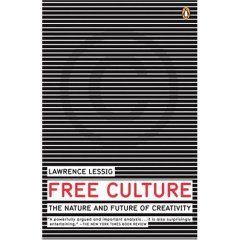
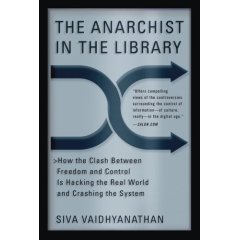
UNASSIGNED READINGS:
Lessig, Lawrence. (2004). Free culture: How big media uses technology
and the law to lock down culture and control creativity. New York;
Penguin.
This book and the Vaidhyanathan book mentioned below
present a truly terrfying picture of governmental control of intellectual
products. I wouldn't expect big business to do anything but protect its
own interests regardless of the cost to our culture, but some of the unintended--or
at least uninformed--consequences of governmental decisions are truly
frightening.
Vaidhyanathan, S. (2004). The Anarchist in the library: How the clash
between freedom and control is hacking the real world and crashing the
system.
New York: Basic
Books.
This discussion
of the differences between oligarchic and distributed (anarchist) systems
is fascinating for its assessment of the economic, cultural, and political ramifications
of the Internet, but it also has relevance to educational design. Distributed
systems (such as the Internet) promote truly democratic organizational patterns,
which should be the foundation of effective educational design.
EDIT 797c: HTML, Javascript, and Video Publishing
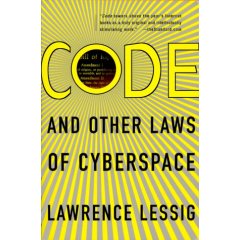
UNASSIGNED READINGS:
Lessig, L. (1999). Code and other laws of cyberspace. New York:
Basic Books.
Lessig presents the possibility of a dystopian society in which citizens
are spied upon by both business and government. To protect property,
privacy, and intellectual freedom, he proposes that we need intelligent
regulation rather than deregulation. Some of what he describes is already
dated (such as his discussion of the Y2K problem),
but his central point is valid: we must realize that we have created
the "cyber revolution"
and its concommitant
problems and must think through possible solutions rather than basing our
decisions on knee-jerk reactions or a sense of helplessness. There is
more to learning code than simply learning code.
FALL SEMESTER,
2004
EDCI 797d: K-12 Virtual Learning and Teaching
Daloz, L. A. (1999). Mentor: Guiding the journey of adult learners. (2nd ed.) San Francisco: Jossey-Bass.
This work was more useful to me as an adult learner than as a student. I will use it, no doubt, as I mentor teachers in The Online Academy for Teachers the fall of 2005. When I read this, I was taking an online course in online learning. The text enabled me to better self-regulate and identify my strengths and weaknesses as a learner.
Maeroff, G. (2003). A Classroom of one: How online learning is changing our schools. New York: Palgrave.
I have difficulty separating
this text from my practical experiences as I was reading it. I was
taking an online course with my own mentor as I was designing online
courses for high school students--including resources for their mentors--and
mentoring a student who was taking one of the courses I had designed.
The work has a wider applicability, though. Just as technology is changing
the way our students interact with the world and learn, online learning
is changing schools, not always in ways that are anticipated
or desirable. Because we have much to learn from online learning that
is applicable to any learning environment, this
work has a wider audience than may be obvious.
Tishman, S., Perkins, D., & Jay,
E. (1994). The thinking classroom: Learning and teaching in a
culture of thinking. New York: Allyn & Bacon.
This short little book makes
transforming every classroom into a place that teaches thinking--not
just one that encourages thinking--a reality. The
first step is identifying the six components
of a
thinking classroom:
the language of thinking, dispositions of thinking, mental mangement,
strategic spirit, higher-order knowledge, and transfer. Most texts
addressing this issue get no further than discussing and encouraging
higher-order knowledge; however, after identifying the components,
this text actually offers a schedule and specific lessons. This should
be
required for all teachers, K-college.
Zimmerman, B. J., Bonner
S., & Kovach, R. (1996). Developing self-regulated learners:
Beyond achievement to self-efficiency. Washington, DC: American Psychological
Association.
This is one of the most important books I have read in years. While experts agree that self-regulation is critical for online learners, it is an equally important skill for learners in any environment. Self-regulation should be at the core of any plan for developing students who are life-long learners. Frequently, we simply praise and reward students who practice self-regulation and denigrate and punish those who don't; rarely do we actually attempt to teach the skills of self-regulation. Most teachers probably could not even identify the skills embedded in what we call self-regulation. This book does an excellent job of providing the tools and a plan with which to teach these critical skills.
Spring
2005 - Fall 2006
